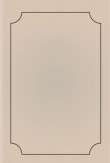قراءة كتاب The Edinburgh Lectures on Mental Science
تنويه: تعرض هنا نبذة من اول ١٠ صفحات فقط من الكتاب الالكتروني، لقراءة الكتاب كاملا اضغط على الزر “اشتر الآن"
The
EDINBURGH LECTURES
ON MENTAL SCIENCE
BY
THOMAS TROWARD
LATE DIVISIONAL JUDGE, PUNJAB
1909
THE WRITER AFFECTIONATELY DEDICATES THIS LITTLE VOLUME TO HIS WIFE
FOREWORD.
This book contains the substance of a course of lectures recently given by the writer in the Queen Street Hall, Edinburgh. Its purpose is to indicate the Natural Principles governing the relation between Mental Action and Material Conditions, and thus to afford the student an intelligible starting-point for the practical study of the subject.
T.T.
March, 1904.
CONTENTS.
II.--THE HIGHER MODE OF INTELLIGENCE CONTROLS THE LOWER
III.--THE UNITY OF THE SPIRIT
IV.--SUBJECTIVE AND OBJECTIVE MIND
V.--FURTHER CONSIDERATIONS REGARDING SUBJECTIVE AND OBJECTIVE MIND
VI.--THE LAW OF GROWTH
VII.--RECEPTIVITY.
VIII.--RECIPROCAL ACTION OF THE UNIVERSAL AND INDIVIDUAL MINDS
X.--INTUITION
XI.--HEALING
XII.--THE WILL
XIII.--IN TOUCH WITH SUBCONSCIOUS MIND
XIV.--THE BODY
XV.--THE SOUL
XVI.--THE SPIRIT
I.
SPIRIT AND MATTER.
In commencing a course of lectures on Mental Science, it is somewhat difficult for the lecturer to fix upon the best method of opening the subject. It can be approached from many sides, each with some peculiar advantage of its own; but, after careful deliberation, it appears to me that, for the purpose of the present course, no better starting-point could be selected than the relation between Spirit and Matter. I select this starting-point because the distinction--or what we believe to be such--between them is one with which we are so familiar that I can safely assume its recognition by everybody; and I may, therefore, at once state this distinction by using the adjectives which we habitually apply as expressing the natural opposition between the two--living spirit and dead matter. These terms express our current impression of the opposition between spirit and matter with sufficient accuracy, and considered only from the point of view of outward appearances this impression is no doubt correct. The general consensus of mankind is right in trusting the evidence of our senses, and any system which tells us that we are not to do so will never obtain a permanent footing in a sane and healthy community. There is nothing wrong in the evidence conveyed to a healthy mind by the senses of a healthy body, but the point where error creeps in is when we come to judge of the meaning of this testimony. We are accustomed to judge only by external appearances and by certain limited significances which we attach to words; but when we begin to enquire into the real meaning of our words and to analyse the causes which give rise to the appearances, we find our old notions gradually falling off from us, until at last we wake up to the fact that we are living in an entirely different world to that we formerly recognized. The old limited mode of thought has imperceptibly slipped away, and we discover that we have stepped out into a new order of things where all is liberty and life. This is the work of an enlightened intelligence resulting from persistent determination to discover what truth really is irrespective of any preconceived notions from whatever source derived, the determination to think honestly for ourselves instead of endeavouring to get our thinking done for us. Let us then commence by enquiring what we really mean by the livingness which we attribute to spirit and the deadness which we attribute to matter.
At first we may be disposed to say that livingness consists in the power of motion and deadness in its absence; but a little enquiry into the most recent researches of science will soon show us that this distinction does not go deep enough. It is now one of the fully-established facts of physical science that no atom of what we call "dead matter" is without motion. On the table before me lies a solid lump of steel, but in the light of up-to-date science I know that the atoms of that seemingly inert mass are vibrating with the most intense energy, continually dashing hither and thither, impinging upon and rebounding from one another, or circling round like miniature solar systems, with a ceaseless rapidity whose complex activity is enough to bewilder the imagination. The mass, as a mass, may lie inert upon the table; but so far from being destitute of the element of motion it is the abode of the never-tiring energy moving the particles with a swiftness to which the speed of an express train is as nothing. It is, therefore, not the mere fact of motion that is at the root of the distinction which we draw instinctively between spirit and matter; we must go deeper than that. The solution of the problem will never be found by comparing Life with what we call deadness, and the reason for this will become apparent later on; but the true key is to be found by comparing one degree of livingness with another. There is, of course, one sense in which the quality of livingness does not admit of degrees; but there is another sense in which it is entirely a question of degree. We have no doubt as to the livingness of a plant, but we realize that it is something very different from the livingness of an animal. Again, what average boy would not prefer a fox-terrier to a goldfish for a pet? Or,



